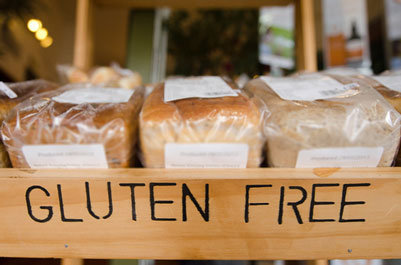Foods labeled gluten-free must now meet FDA’s definition
- Like
- Digg
- Del
- Tumblr
- VKontakte
- Buffer
- Love This
- Odnoklassniki
- Meneame
- Blogger
- Amazon
- Yahoo Mail
- Gmail
- AOL
- Newsvine
- HackerNews
- Evernote
- MySpace
- Mail.ru
- Viadeo
- Line
- Comments
- Yummly
- SMS
- Viber
- Telegram
- Subscribe
- Skype
- Facebook Messenger
- Kakao
- LiveJournal
- Yammer
- Edgar
- Fintel
- Mix
- Instapaper
- Copy Link
Posted: 7 August 2014 | The Food and Drug Administration | 1 comment
All foods labeled gluten-free must meet all requirements of the gluten-free labeling final rule published in August 2013…


Gluten Free
As of today, all foods labeled gluten-free must meet all requirements of the gluten-free labeling final rule published in August 2013.
The requirements apply to packaged foods labeled on or after today. FDA recognizes that many foods currently labeled as gluten-free may already meet the new federal definition. However, consumers should be aware that there may be some products still on store shelves that were produced and labeled before the compliance date for FDA’s rule.


All foods labeled gluten-free must meet all requirements of the gluten-free labeling final rule
Today’s compliance date was established in the final rule one year ago to allow the food industry sufficient time to make changes needed in the formulation or labeling of their foods that voluntarily bear a gluten-free claim in the United States.
The final rule provides a uniform standard definition to help consumers with celiac disease manage a gluten-free diet. Gluten-free foods must contain less than 20 parts per million (ppm) gluten. Foods may be labeled “gluten-free” if they are inherently gluten free; or do not contain an ingredient that is: 1) a gluten-containing grain (e.g., spelt wheat); 2) derived from a gluten-containing grain that has not been processed to remove gluten (e.g., wheat flour); or 3) derived from a gluten-containing grain that has been processed to remove gluten (e.g., wheat starch), if the use of that ingredient results in the presence of 20 ppm or more gluten in the food.
On June 25, 2014, the FDA issued a guide for small food businesses to help them comply with the final rule’s requirements. FDA will continue to work with, educate and monitor industry on the use of the gluten-free claim.
Outreach will be conducted to assist the industry, as needed, to ensure that the provisions of the rule are fully understood. In addition, FDA will use its existing compliance and enforcement tools, such as inspection, laboratory analysis, warning letters, seizure, and injunction, to ensure that the use of the claim on food packages complies with the definition.
FDA recognizes that people with celiac disease are also interested in being able to identify gluten free foods served in restaurants and other retail establishments that serve prepared foods to customers. The gluten-free final rule applies to packaged foods, which may be sold in some retail and food-service establishments such as some carry-out restaurants. Given the public health significance of “gluten-free” labeling, FDA says that restaurants and other establishments making a gluten-free claim on their menus should be consistent with FDA’s definition. State and local governments play an important role in oversight of these establishments.
We look forward to working with the states, the restaurant industry and other stakeholders to support education and outreach on the appropriate use of the term gluten-free.
For additional information: www.fda.gov/gluten-freelabeling









Complying with FDA regulations is essential for food industries. As regulations occur or change regularly, beneficiating from a flexible repository with data and documentation attached is a real plus. The FDA gluten-free new regulation is a good example. As more and more consumers are sensitive to gluten, it is important to considerate products differently. An effective PLM, such as Lascom CPG has already helped lots of food industries all over the world to better comply with food regulations and adapt labeling for new and existing products. Discover more about our solutions: http://www.lascom.com/en/ics-product-features/ics-product-features3.html. Lots of companies consider compliance with regulations as a pain. First, with an efficient PLM, adapting formula and labeling of existing products is not a problem anymore. Second, FDA regulations are often based on new trends or new consumption issues. Food companies should consider these issues to better adapt their portfolio and answer to consumers demand in their new product development management.